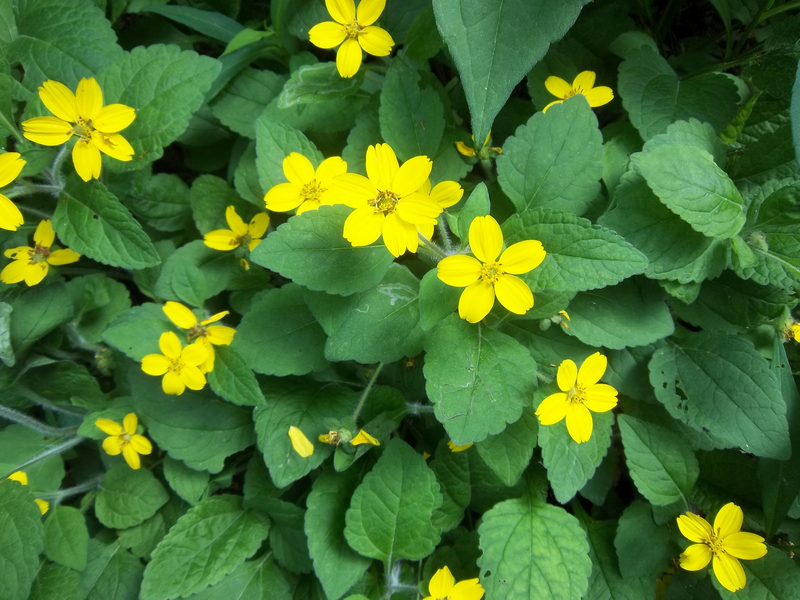Green and Gold
Chrysogonum virginianum
Click here to download a PDF of this plant information page (for printing).

Sun Exposure: Part Sun, Shade
Season of Interest: Spring, Summer, Fall
Bloom Time: March - October
Bloom Color: Yellow
Height: 6 in.
Spread: 10 in.
Spacing: 12 in.
Water Needs: Average
Maintenance: Very little
Soil Type: High in organic matter
Soil pH: Acidic, Neutral
Soil Drainage: Well drained
Pests: Slugs, Deer reisitant
Diseases: Powdery mildew
Wildlife: Bees, Buterflies

Description:
Green and Gold (Chrysogonum virginianum, with "Chrys" meaning "gold" and "gon" meaning "offspring") is named after the kind of flowers that it produces during its blooming season. Belonging to the Asteraceae family, it's a perennial herb with hairy leaves and clusters of gorgeous and bright yellow flowers that grow from the leaf axils.
Also known as the golden star, it is native to the eastern United States; therefore, it is an excellent addition to native plant gardens, woodland gardens, woodland paths, and shade gardens. For more information see:
plants.ces.ncsu.edu/plants/chrysogonum-virginianum
Care and Growing Tips:
Green and gold is a low maintenance plant. You don't have to worry about pest problems, plant diseases, or constant pruning. Also, it can handle average soil with moderate moisture. It grows well in part to full shade, or areas of sun dappled part shade. The ideal location is a partly shady sun-dappled area. In winter it will stop growing, but growth will resume in spring. Since it's semi-evergreen, don't worry about the plant browning a little in winter since this is a natural part of its seasonal growth cycle.
Chrysogonum virginianum plants prefer medium to wet soil. If you decide to plant green and gold in full sun rather than part shade, you need to water more frequently or the plants will suffer. These plants prefer neutral or acidic soil with pH value less than 6.8. Organically rich soils with consistent moisture are best. Add compost at 20% by volume to heavy clay soils to improve drainage. This plant does not require fertilizer, but you can feed it with a slow-release, organic fertilizer if you choose.
Because flowering stems rise from leaf axils of the foliage mat in spring, you can remove the flower stems as the flowers fade in fall to prevent self-seeding.. Prune the green parts of the plant at any time to improve air circulation and shape the plant.